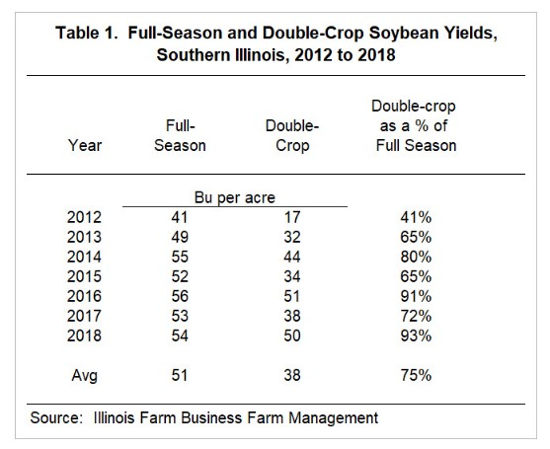By Michael Langemeier
Center for Commercial Agriculture
Purdue University
Introduction
As farms continue to consolidate it becomes increasingly important to assess a farm’s management skills. At a certain farm size, it is no longer easy or feasible for the manager or managers to wear every management hat. How does the management team determine when to focus on professional development, delegate management tasks among mangers, and seek outside assistance? This is the seventh article in a series of articles pertaining the assessment of management skills. The topic of this article is the assessment of risk management skills.
Relationship Management and Leadership Skills
Table 1 presents important risk management skills. Important skills in this management area include the following: managing production, financial, human, legal, and relationship risks; developing written contingency plans to deal with uncertain events; maintaining proper levels of life, health, property, and liability insurance; carefully selecting crop insurance products and coverage levels; documenting compliance with regulatory requirements; effectively managing interest rate risk; and having written estate and succession plans in place. Each farm operator should rank their ability with respect to each skill using a 1 to 5 scale with 1 be relatively weak and 5 being relatively strong with respect to that skill. The idea behind checklists such as that presented in Table 1 is to assess whether a farm has a skills gap, which is defined as the difference between skills that a farm needs and the skills of their current workforce (operators and employees). Conducting a skills gap analysis helps a farm to identify skills that will be needed to become more efficient and expand.

The checklist in Table 1 does not include a final tally score, nor does it address tradeoffs in various skill or ability areas that may lead to success. Rather, the checklist helps farm operators evaluate their skills and abilities in areas critical to long-term financial success. As farm operators fill out the checklist, they should try to determine which of the skills listed are most essential to improving efficiency and expansion plans.
The discussion below will focus on the steps commonly using when managing risk and the identification and classification of risks. Taxonomies that categorize risks often exclude discussions of strategic risk which involves the sensitivity of the farm’s strategic direction and ultimate vulnerability and sustainability of the farm to uncertainties in the business climate. A brief discussion of strategic risk can be found below. More information regarding strategic risk can be garnered from a previous farmdoc article (
May 5, 2017).
Steps in Risk Management
Crane et al. (2013) discuss nine steps involved in risk management planning. We will briefly review these steps. The first step is to identify and classify risks (see discussion below). The second step is to measure or assess risks. Variability of outcomes and downside risk (i.e., the likelihood of low outcomes) are two common measures of risk. Risk can also be assessed using scenarios. For example, when developing a business plan it is common to evaluate three scenarios: most likely, worst case, and optimistic. The third step is the assess risk bearing capacity, which is directly related to a farm’s liquidity and solvency position. A farm with strong working capital and solvency positions, can take on more risk. The fourth step is to evaluate risk tolerance or preferences. Risk averse individuals are cautious risk takers. They often give up some income to mitigate risk. Risk neutral individuals focus on income potential when making decisions. The fifth step is to set risk management goals. The sixth step is to identify risk management tools such as crop insurance, forward pricing, controlling leverage, and reducing the chance of a disease outbreak with preventive measures. The seventh step is select professional assistance in management areas where the expertise does not reside within the business. The finals two steps involve making a decision, implementing the plan, and evaluating the results.
Identifying and Classifying Risks
The five primary sources of risk include production risk, marketing risk, financial risk, legal risk, and human risk. The first three sources are largely self-explanatory. Tools used to mitigate these risks include crop insurance, futures and options, and managing liquidity and solvency. Legal risk may emanate from contracts, business organization, and laws and regulations. Human risk includes the following categories: human health and well-being, family and business relationships, employee management, and transition planning. Obviously from the list, even farms without hired employees (i.e., just utilize family labor) face human risk.
Strategic risk involves the sensitivity of the farm’s strategic direction and vulnerability and sustainability of the farm to uncertainties in the business climate (Boehlje and Langemeier, 2017). Strategic risk can also be thought of as the source of loss that may arise from the pursuit of an unsuccessful business plan. Managing strategic risk often requires the development of alternatives or contingency plans. Using what-if scenarios can be useful. In addition to thinking about the possible consequences of a major decision, it is also important to think about how difficult it may be to unwind a decision if does not go according to plan.
Concluding Comments
There is an important tradeoff between risk and return. Activities or investments with a higher expected return involve higher levels of risk. Similarly, activities or investments with lower levels of risk are often associated with lower expected returns. Risk management involves optimizing expected returns given the risks involved. In addition to managing production, marketing, financial, legal, and human risk, it is imperative that a farm assess and manage strategic risk. Strategic positioning skills and strategic risk will be the topic of the next article in this series.